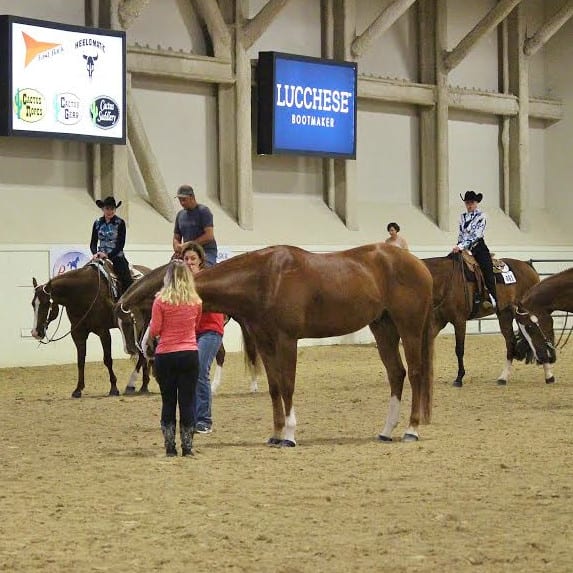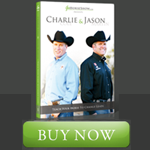Head on collisions, sideswipes, lane hogs, and road rage… sounds like traveling down America’s busiest freeways, right?
Well, sure…or it could just be that you’re in the warm up pen at any given horse show.
Probably since the beginning of horse showing, the warm up pen has been a place where people sort of forget that the world does not revolve around them. Wrecks happen, unkind words are exchanged and it can be a rough place to be at a horse show.
Everyone has a horror story about a warm up pen experience and GoHorseShow was interested to find out from both exhibitors and trainers, once and for all, what proper warm up pen etiquette is, and how to make it a more enjoyable experience for all involved.
The Holding Pen is a Place to Polish, Not Prepare
All of the exhibitors and trainers we spoke with said the one thing everyone needs to remember is that the holding pen (the arena adjacent to the show arena or the area sectioned off by cones inside the show arena) is a place to polish, not prepare your horse.
Rebecca Bunting, an Amateur exhibitor from Wichita, Kansas said, “The holding pen is not a training avenue. People need to stop trying to do the whole pattern in there and simply work on 1-2 elements that they need to practice before going in the (show) arena.”
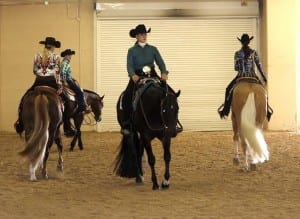 Beckie Peskin, an Amateur exhibitor from Atlanta, Georgia agreed, “If you have serious work to do, go somewhere else to get it done. I’ve seen wrecks happen right before people go in and it can easily ruin their ride.”
Beckie Peskin, an Amateur exhibitor from Atlanta, Georgia agreed, “If you have serious work to do, go somewhere else to get it done. I’ve seen wrecks happen right before people go in and it can easily ruin their ride.”
The bottom line is exhibitors need to enter the holding pen 99% ready to show their horse. If you haven’t done the homework before you hit that pen, it’s too late. And it isn’t fair (aka: poor etiquette) to let your warm up mess up someone else’s.
Everyone we interviewed said that the best way to get the most out of your time in the holding pen, (while still exhibiting good etiquette) is to work on smaller elements/maneuvers and not try to do it all.
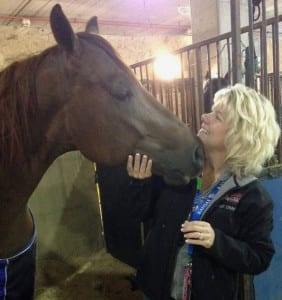 Bunting (pictured left) said, “You’ve got to have a plan when you’re in there. And you have to realize you aren’t going to get it ALL done,” she continued, “people also need to realize that the judges normally have a good view of the holding pen and can see how you are handling yourself. You need to be respectful of the judges and the other exhibitors.”
Bunting (pictured left) said, “You’ve got to have a plan when you’re in there. And you have to realize you aren’t going to get it ALL done,” she continued, “people also need to realize that the judges normally have a good view of the holding pen and can see how you are handling yourself. You need to be respectful of the judges and the other exhibitors.”
Peskin said, “If you need to run the whole pattern, you need to be willing to do it at odd hours, when there isn’t a lot of traffic and you’re in a warm up arena, not a holding pen.”
And if you plan on practicing your back in a holding pen? Please remember to look before you start backing your horse.
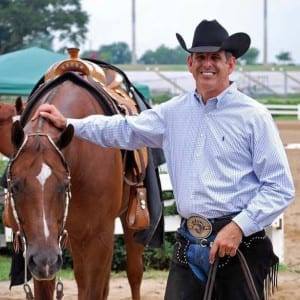 Gene Spagnola of Powder Brook Farm in Harwinton, Connecticut said, “Showmanship is one of the most dangerous classes to warm up for. People are constantly backing into you, especially when they can’t see over their horse.”
Gene Spagnola of Powder Brook Farm in Harwinton, Connecticut said, “Showmanship is one of the most dangerous classes to warm up for. People are constantly backing into you, especially when they can’t see over their horse.”
When you back your car up, you always check your rearview and side mirrors, right? Same rule applies when backing your horse in the warm up pen, or even more importantly in the holding pen.
Lastly, if you are not in the class that is immediately preparing to enter the show arena, stay out of the holding pen. It’s not that big and gets crowded fast. Be courteous and let the exhibitors who are getting ready to show, have that time to polish their performances.
Communication (and Education) Go a Long Way
We’ve all witnessed a less than friendly exchange in the warm up pen. It is worth noting that 99% of those exchanges could be avoided with a little communication.
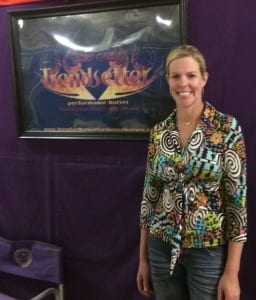 Kellie Hinely of Trendsetter Performance Horses in Chino Hills, California said, “If you’re not happy about something that someone is doing in the warm up pen, handle it and talk about it… but don’t be confrontational about it. You can accomplish the same thing with a friendly tone.”
Kellie Hinely of Trendsetter Performance Horses in Chino Hills, California said, “If you’re not happy about something that someone is doing in the warm up pen, handle it and talk about it… but don’t be confrontational about it. You can accomplish the same thing with a friendly tone.”
Hinely was also adamant that it really is the job of the trainers to educate their clients/students on what proper warm up pen etiquette is and to help them realize that they really need to be mindful of everyone around them.
Peskin said, “We all want to get our horses prepped… but you have to be reasonable and you can’t put others in peril.”
Bunting agreed, “If people would communicate more on what they are doing so that others know what is going on, a lot of wrecks could be avoided. We really need to have an atmosphere of learning and understanding.”
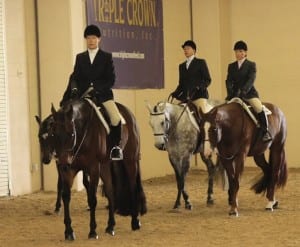 “Everyone has the same problems,” said Spagnola, “if you can’t get it done just do the best you can. And if you do happen to run into someone, just apologize and say, ‘Hey, I didn’t see ya there. I’m sorry.”
“Everyone has the same problems,” said Spagnola, “if you can’t get it done just do the best you can. And if you do happen to run into someone, just apologize and say, ‘Hey, I didn’t see ya there. I’m sorry.”
And as Hinely pointed out, if you ask someone to do something (like longe your horse in a corner) in a nice way, it really is hard for that person to say no. It’s a win-win.
Speaking of communication, many of the people we interviewed mentioned the new “devil” in the warm up pen. Can you guess what it is?
That’s right…cell phones.
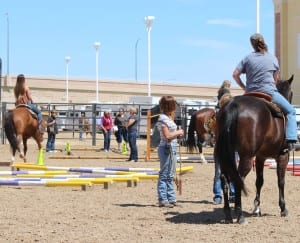 “People’s cell phone etiquette is awful,” said Spagnola.
“People’s cell phone etiquette is awful,” said Spagnola.
Hinely agreed, “When people sit on an obstacle (in a Trail warm up) talking to someone on their phone… that is really frustrating.”
And it isn’t just cell phone chatting in the warm up pen. Human conversation (yes, it’s rare in this day and age) can also be a huge distraction.
“When people stop and hang out on the rail, they really need to realize they need to go to the center of the arena,” said Hinely.
Watch Where You’re Going
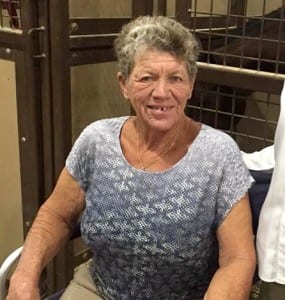 It’s kind of ironic really, that we, as equestrians, are taught to always keep our eyes up, however, it seems like everyone is looking at the ground in the warm up pen.
It’s kind of ironic really, that we, as equestrians, are taught to always keep our eyes up, however, it seems like everyone is looking at the ground in the warm up pen.
While this is dangerous in any warm up arena, the place where this becomes incredibly dangerous is in the Hunter warm ups.
Sandra Vaughn of Sandra Vaughn Quarter Horses in Hernando, Florida said, “People just get so focused on what they’re doing, they just don’t watch. And it really is a safety issue.”
Like Hinely, Vaughn believes that it is up to the professional horsemen to educate their students (especially youth riders) on what it means to look up and in regards to the Hunters educate their students on how to “call your jumps.”
Not calling jumps is how wrecks happen in the Hunters.
“You may know your pattern, but there are others in the arena too, that may be practicing a different pattern,” said Vaughn, “You have to let people know which jumps you are aiming to take so they don’t cut you off (unintentionally) or you don’t (unintentionally) run them over.”
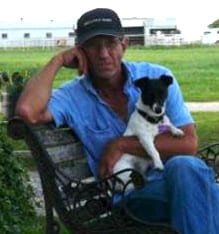 Although, as Jerry Erickson of Jerry Erickson Quarter Horses in Sanger, Texas points out: “Just because you call a jump doesn’t mean you own that fence. You need to be aware of where other riders are both before and after you call it to make sure they are not already traveling in that path. If they are, you may need to abort.”
Although, as Jerry Erickson of Jerry Erickson Quarter Horses in Sanger, Texas points out: “Just because you call a jump doesn’t mean you own that fence. You need to be aware of where other riders are both before and after you call it to make sure they are not already traveling in that path. If they are, you may need to abort.”
Of course, looking down and/or just not watching where you’re going isn’t exclusive to the Hunters.
Trail and Showmanship warm ups are another beast.
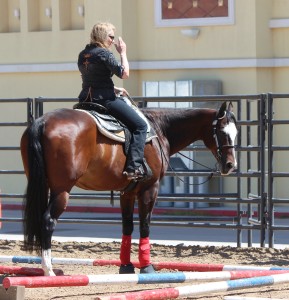 “People are just in their own little world,” said Spagnola, “and sometimes you have to stop and be courteous.”
“People are just in their own little world,” said Spagnola, “and sometimes you have to stop and be courteous.”
“If you have people practicing two courses that go in opposite directions that can be extremely challenging,” said Hinely, “the polite thing to do is let the person who is preparing to go show go first and just wait your turn.”
It’s also important to note that while you must be aware of your surroundings, if you let it psych you out you actually will become “that” person. Erickson had some great insight and said, “If you ‘check out’ on riding your horse, it’s actually impossible to be truly aware, and that’s when things get dangerous.”
How To Be a Better in the Warm up Pen
 When asked what more people can do to exhibit better etiquette in the warm up pen, it’s not surprising that everyone we interviewed had overlapping responses.
When asked what more people can do to exhibit better etiquette in the warm up pen, it’s not surprising that everyone we interviewed had overlapping responses.
Unlike a lot of things with regard to showing horses where everyone has their own opinion and if you ask a question you get a million different answers, proper warm up etiquette is really quite simple and boils down to a few simple things.
First, if you show the pattern classes, lay it out at home or at odd hours during the show.
Spagnola said, “You can help the congestion at one third of horse shows by laying out your pattern at home.”
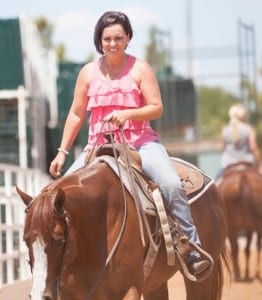 “We try to do our practices the night before to not only alleviate traffic, but some of the stress that comes in the morning,” said Hinely.
“We try to do our practices the night before to not only alleviate traffic, but some of the stress that comes in the morning,” said Hinely.
Second, if your horse needs longing, please be courteous and respectful. Early morning hours before the traffic gets heavy is ideal. And if the arena has a “NO LONGING” sign posted, that means NO LONGING.
Third, when practicing for rail classes, stay to the right.
Vaughn said, “You can’t go wrong if you stay to the right. It’s like driving a car. If everyone did this, we would eliminate a lot of head on collisions.”
Spagnola added, “If everyone does happen to be going the same direction, don’t try to buck the system and go the other way.”
In a world where we are told conformity is “bad,” in this case conformity is a very, VERY good thing.
Fourth, look at your warm up time as a good learning opportunity.
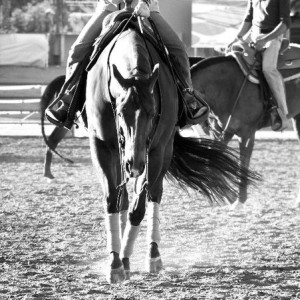 Erickson said, “I actually like the warm ups because they teach you to be aware of your surroundings and clue you in to how broke your horse really is.”
Erickson said, “I actually like the warm ups because they teach you to be aware of your surroundings and clue you in to how broke your horse really is.”
Lastly, and most importantly, just be courteous. If this subject had a thesis statement, that would be it.
For example, if someone is practicing a pattern in a warm up pen (remember that’s a no-no in the holding pen) be courteous and don’t ride through it or stop in the middle of it and chat on your cell phone or get caught up on text messages.
If you are warming up with reiners or the timed event exhibitors communicate and perhaps make a “deal” to split the arena or not work on certain maneuvers when there are Youth/Novice exhibitors present. Remember, everyone should have the opportunity to warm up accordingly.
Don’t monopolize jumps or obstacles in hunter and trail warm ups.
If you see someone not following the rules, educate them.
And in the words of Ellen Degeneres, “be kind to one another.”


